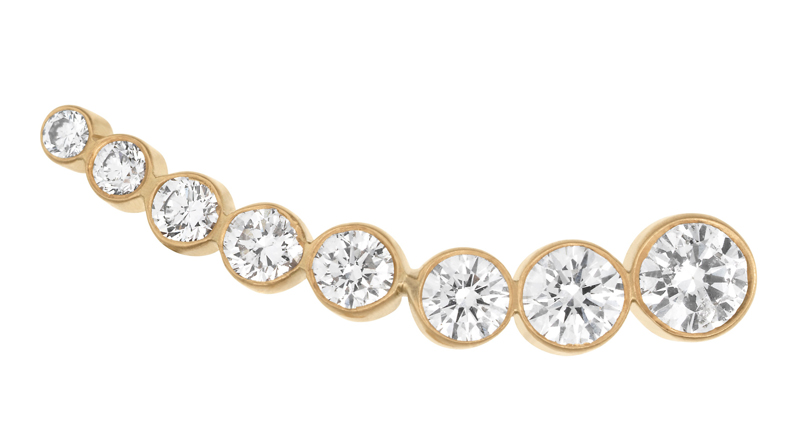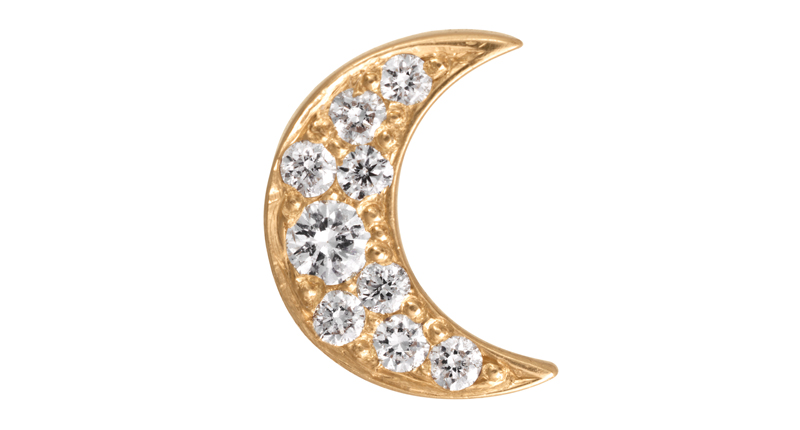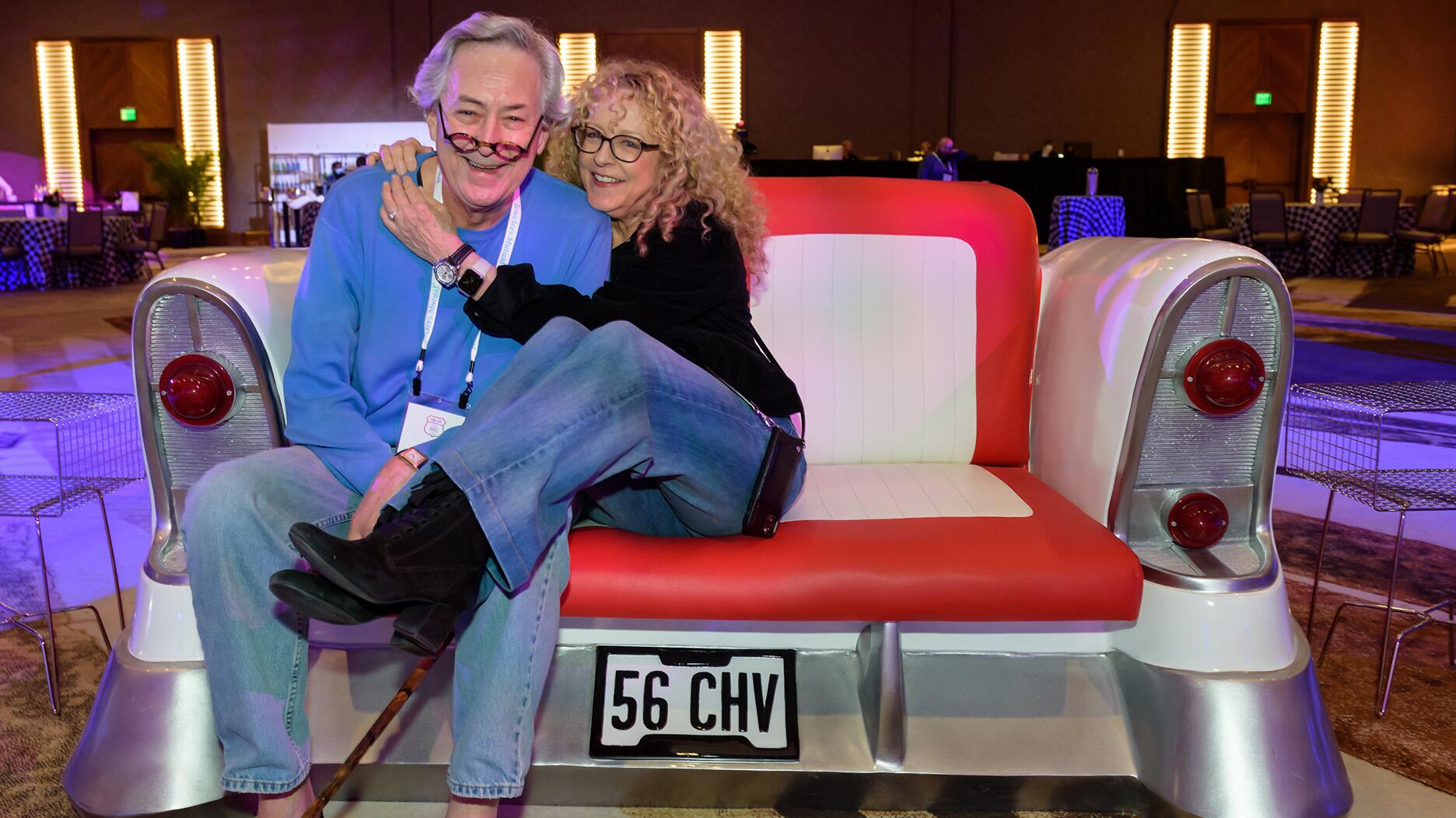The luxury goods company said founder Ippolita Rostagno will remain at the brand’s helm.
3 Pieces with Sophie Bille Brahe
The innovative Danish jewelry designer is a trend-starter and non-conformist with a cult following.

It seems appropriate to me that Copenhagen-based designer Sophie Bille Brahe chose three single earrings to speak about for my “3 Pieces” series.
Brahe created her “Croissant de Lune” ear climber, to my surprise, in 2007, several years before this style of jewelry became a de rigueur piece that every designer churned out to meet customer demand (though the style has had moments of popularity in the past, notably in the 1950s and 1960s).
When I asked Brahe about this, she affirmed as much, saying that in the contemporary era, “I think I was one of the first who started doing this kind of ear crawler that goes up the ear.”
She didn’t belabor
I don’t think it’s something she set out to do; rather, I imagine it’s been a natural effect of the appreciation people have for her work, which is at once modern but quiet, unique but elegant.
I was fascinated with everything Brahe had to say about designing the following three pieces, which ranged from bling to motherhood to astronomy to “stupid flower decorations.”
Read on for a little insight into the mind of one of contemporary jewelry design’s most riveting creators.

Sophie Bille Brahe: The “Croissant de Lune” was one of my first pieces. I actually did it back in 2007, even before I started the company.
It’s 18-karat gold with VVS diamonds. The reason why I did it is because I really wanted to wear some big bling.
I wanted to wear some nice diamond earrings and then I did two kinds of studs, and it looked so Beckham-like. I was like, “Oh no, that’s definitely not the way I want to wear that.” I really wanted to use the diamonds in a way where you had the feeling of proper bling but without being this kind of status symbol--just let the diamond stand in its own beauty.
I think that’s very much the way I work with all the jewelry I make; I try to use the material to tell a story, I try to let them stand alone rather than cover a diamond with a lot of decoration. I like to have clean, clean lines in the materials.
At the point where I did this piece, people would normally only wear two earrings. I think it’s much different now that people are more educated in being able to just wear one earring, but I really liked this, that the jewelry could be worn in one ear and then you could put something in the other ear.
“I really wanted to use the diamonds in a way where you had the feeling of proper bling but without being this kind of status symbol.”My face is not very symmetrical so if I wear a pair of earrings, you can see that I’m not symmetrical. I have always had this feeling that if I put a different earring in each side, it’s easier to create a balance.
I wear “Croissant de Lune” always.

SBB: I lived in London for some time and I came back (to Copenhagen) and I wanted to start a company. And then I got pregnant--not planned. I just knew that this was my child. I knew that I wanted him. So in 2013, two weeks after I had given birth to him, I had to do a collection. I was almost in tears because I just wanted to look at my little boy and it was the messiest thing about bringing him to work and during working hours he was sleeping and it was really kind of stressful.
“I didn’t want to wear anything pearl myself; I thought all the pearls I could find would be really ladylike.”The only, only thing I wanted to do was look at him. So I was like, ‘If I need to do a collection, it needs to be really meaningful to me.’
When I had given birth to my son my mom gave me an old pearl necklace. And I didn’t like pearls, but I kind of thought it would be a really fun element to use.
A pearl has this same kind of magic touch as having a baby. It’s an oyster and suddenly, because of a little grain of sand, there’s a pearl. It’s linked up to the moon; there are all these magical stories around it so, to me, it made sense to use the pearl.
I didn’t want to wear anything pearl myself; I thought all the pearls I could find would be really ladylike. So I tried to put it together with piercing elements. In the little gold ball there is a screw mechanism--it’s actually a very industrial thing to do, just done in a miniature way.
Just like the “Croissant de Lune,” the pearl is just a pearl; there’s no stupid flower decoration, there’s just the beauty of a pearl. You don’t need to think about a lot of things, you can just enjoy the glow and the color and the pure shape.
It’s a Japanese Akoya pearl and the gold is 14-karat yellow gold because of the screw mechanism. You cannot do it in 18-karat because the gold needs to be harder.

SBB: For each collection I have a story, some kind of thing that is about somewhere where I am in my life. It’s always quite linked up to my personal life, so this was why I chose the “Claire de Lune,” because I did a whole collection about star constellations. This is because my great-great grandfather was a very famous astronomer who found a star in the constellation Cassiopeia.
“I try to have…the universe represented in each collection.”I did a whole collection inspired by a feeling of the place where the sea and the sky meet. There’s a feeling of never ending. I think this piece explains a little bit about how I try to have some kind of the universe represented in each collection.
I do sketches on Post-its, more like not to forget my thoughts. Then straight from there you can say almost I do the sketches in metal.
If you look at my table there’s always kind of these rough, rough things done in metal. I just need to get a feeling of how I want it to look and from these metal sketches then I do them exactly how I want them in gold. I think I work very much into the metals from the beginning.
The Latest

Laura Burdese, who joined the Italian luxury brand in 2022, will take on the role in July.

Need a gift for the cat lover who has everything? Look no further than our latest Piece of the Week.

How Jewelers of America’s 20 Under 40 are leading to ensure a brighter future for the jewelry industry.

It purchased the “Grosse Pièce,” an ultra-complicated Audemars Piguet pocket watch from the ‘20s, for a record-breaking price at Sotheby’s.


The lab-grown diamond grower now offers custom engagement and fashion jewelry through its Kira Custom Lab Jewelry service.

The boutique is slated to open this week inside Terminal 8, offering pre-owned Rolex watches and more to international travelers.

Roseco’s 704-page catalog showcases new lab-grown diamonds, findings, tools & more—available in print or interactive digital editions.

Sponsored by Digital Monitoring Products

The special-edition egg pendant ingested in a New Zealand jewelry store was recovered after a six-day wait.

Associate Editor Natalie Francisco plays favorites with Piece of the Week, selecting a standout piece of jewelry from each month of 2025.

The “Love and Desire” campaign is inspired by the magic that follows when one’s heart leads the way, said the brand.

Two awardees will receive free tuition for an educational course at the Swiss lab, with flights and lodging included.

Berta de Pablos-Barbier will replace Alexander Lacik at the start of January, two months earlier than expected.

Sotheby’s held its first two jewelry sales at the Breuer building last week, and they totaled nearly $44 million.

Winners will receive free registration and lodging for its fourth annual event in Detroit.

Here are six ideas for making more engaging content for Instagram Reels and TikTok, courtesy of Duvall O’Steen and Jen Cullen Williams.

The honorees include a notable jewelry brand, an industry veteran, and an independent retailer.

Carlos Jose Hernandez and Joshua Zuazo were sentenced to life without the possibility of parole in the 2024 murder of Hussein “Sam” Murray.

Yood will serve alongside Eduard Stefanescu, the sustainability manager for C.Hafner, a precious metals refiner in Germany.

The New Orleans jeweler is also hosting pop-up jewelry boutiques in New York City and Dallas.

Set in a Tiffany & Co. necklace, it sold for $4.2 million, the highest price and price per carat paid for a Paraíba tourmaline at auction.

The jeweler’s “Deep Freeze” display showcases its iconic jewelry designs frozen in a vintage icebox.

Take luxury gifting to new heights this holiday season with the jeweler’s showstopping 12-carat sphene ring.

This year's theme is “Unveiling the Depths of the Ocean.”

In its annual report, Pinterest noted an increase in searches for brooches, heirloom jewelry, and ‘80s luxury.

Starting Jan. 1, customers can request the service for opal, peridot, and demantoid garnet.



























